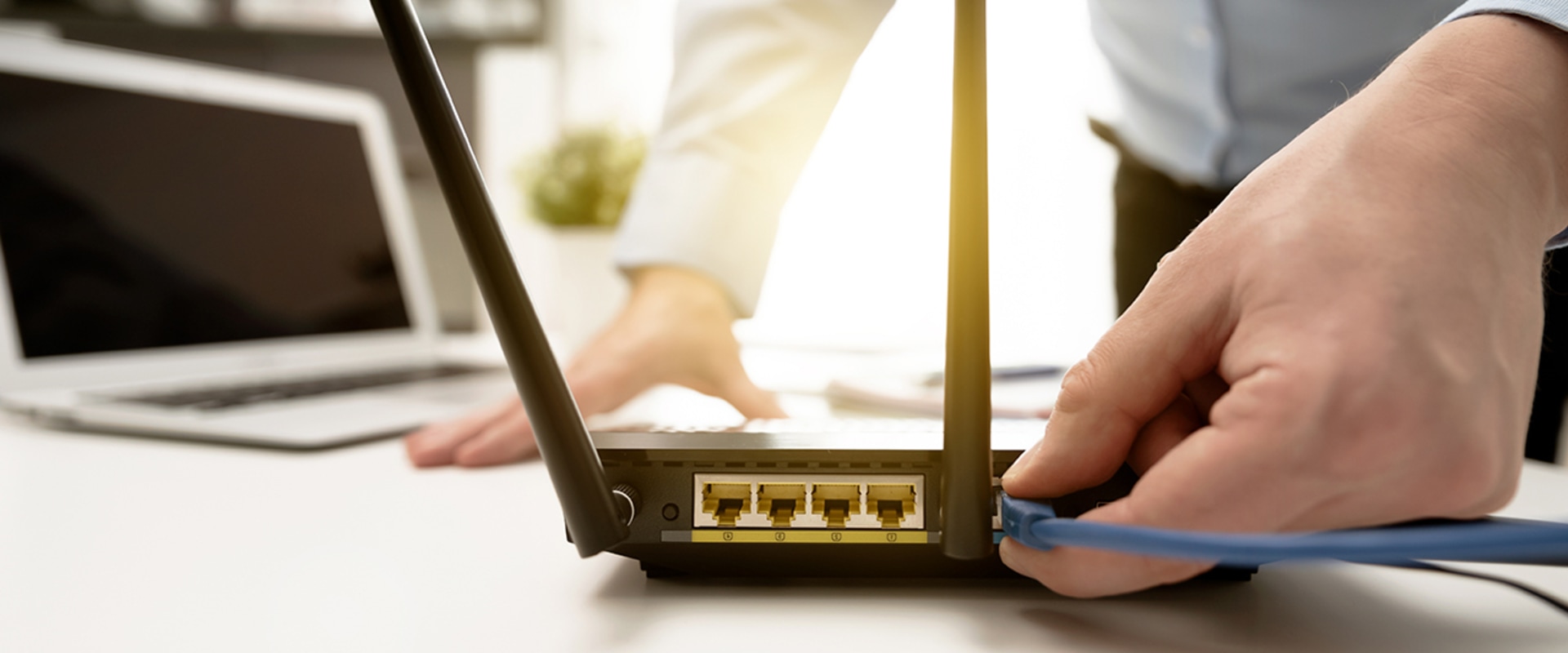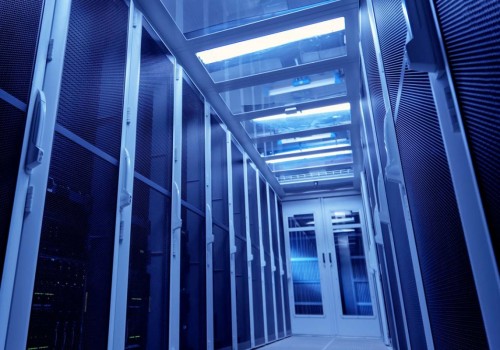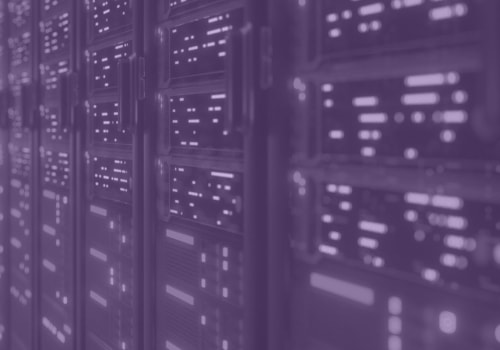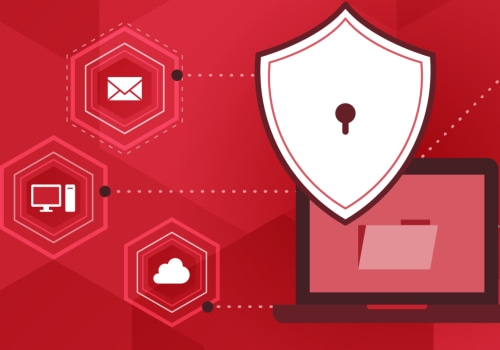When it comes to setting up a secure, reliable IT infrastructure, one of the most important components is configuring network devices. Understanding how to configure these devices correctly is essential for ensuring that your system is running optimally and safely. In this article, we'll explore the basics of network device configuration and how it can help you achieve the desired results for your IT infrastructure.
Network Device Configuration
is a critical task for any organization that relies on computers and other electronic devices for their operations. It involves the setup and management of a configuration that meets the organization's needs.Understanding the basics of network device configuration is essential to ensure the security and reliability of an organization's IT infrastructure. Network devices are components of computer networks that allow for communication between computers, servers, and other devices. Some examples of network devices include routers, switches, access points, and firewalls. Each of these devices has its own components that must be configured for the device to function properly.
For example, routers have ports, IP addresses, and subnets that must be configured. There are different types of configurations for network devices, such as static, dynamic, and hybrid configurations. Static configurations involve manually configuring each device, while dynamic configurations are done using software such as Network Configuration Manager (NCM). Hybrid configurations are a combination of static and dynamic configurations.
The protocols used in network device configuration also need to be understood. The most common protocols include IP, Ethernet, and TCP/IP. Understanding these protocols will help in setting up and managing the configuration correctly.
Network security
is another important aspect of network device configuration.Keeping configurations secure requires regular monitoring and updating of the devices. This can be done using tools such as Network Automation Manager (NAM). Security measures should also be taken to prevent unauthorized access to the network devices and data stored on them. Troubleshooting network devices can also be a challenge. To do this effectively, it is important to understand the underlying technologies used by the devices and their configurations.
Best practices for configuring network devices include properly documenting all changes made to the configuration and regularly monitoring performance. Overall, understanding the basics of network device configuration is essential for any organization that relies on computers and other electronic devices for their operations. It is important to know the types of network devices, their components, different types of configurations, protocols used in network device configuration, importance of keeping configurations secure, different tools and software used to manage network devices, and how to troubleshoot and monitor network devices for performance issues.
Network Device Components
Network devices are comprised of several components that must be configured correctly to ensure that they function properly. The most common components include ports, cables, power supplies, and antennas.Ports are the physical connection points on a network device. These are used to connect the device to other devices and networks. Common ports include Ethernet ports, serial ports, and USB ports. Cables are the physical connections that link two or more devices together.
Common types of cables used for networking include Ethernet cables, coaxial cables, and fiber optic cables. Power supplies provide the energy needed to power network devices. Common types of power supplies include AC adapters and DC power supplies. Antennas allow network devices to transmit and receive data from other devices.
They can be directional, omnidirectional, or dual-band.
Troubleshooting Network Devices
Troubleshooting Network DevicesWhen configuring a network device, there are times when problems can arise. Troubleshooting network devices is an important part of managing an IT infrastructure. It involves isolating the problem, identifying the cause, and finding a solution.The first step in troubleshooting a network device is to isolate the problem. This can be done by looking at the logs of the device or by testing individual components. Once the problem has been identified, it can then be addressed. Once the cause of the problem has been identified, the next step is to find a solution.
In many cases, this may involve replacing the hardware or updating the software. If the problem is more complex, it may require manual configuration of the device or working with a vendor to identify and fix the issue. Finally, once the problem has been resolved, it is important to take steps to ensure that it does not happen again. This may involve implementing additional security measures or regularly monitoring the device for any potential problems.
Network Security
Network security is a crucial component of any organization's operations. Without proper security measures in place, the integrity and reliability of the network can be compromised.Proper network security measures should be taken to protect the network and its devices from malicious threats. This can include using firewalls, encryption, and authentication protocols to restrict access to unauthorized users. Additionally, regular software updates should be implemented to ensure that the latest security patches are installed. Organizations should also employ measures such as network segmentation, network access control, and intrusion detection systems to ensure that any malicious traffic is blocked before it reaches the internal network. Additionally, organizations should regularly audit their systems and networks to identify any security weaknesses or vulnerabilities.
This can help organizations take proactive steps to address any potential threats before they become a problem. Finally, organizations should consider implementing security policies for their network devices. These policies should include guidelines for how data is stored and transmitted, as well as how users access the network. Additionally, these policies should include procedures for dealing with security incidents, as well as protocols for responding to any threats or breaches.
Configuration Management Tools
Configuration Management Tools When it comes to setting up and managing a network device configuration, there are a number of tools that can be used. These tools can help to ensure that the configuration is set up correctly and that any changes made are tracked and monitored.Some of the most common configuration management tools include network management systems, automated configuration tools, and network monitoring tools. Network management systems are used to manage the configuration of all the devices in a network. This includes setting up, configuring, and maintaining the different elements of the network, such as routers, switches, firewalls, and access points. Automated configuration tools can automate the process of setting up a network device configuration.
This includes tasks such as provisioning new devices, configuring security settings, and creating backup configurations. Network monitoring tools can be used to monitor the performance of the network and identify any issues that need to be addressed. In addition to these tools, there are a number of other tools that can be used to manage the configuration of a network. These include software-defined networking (SDN) technologies, virtualization technologies, and cloud-based services.
Each of these tools can help to simplify the process of setting up and managing a network device configuration.
Network Configuration Protocols
When configuring a network device, the two main protocols used are IP and Ethernet. IP stands for Internet Protocol, and it is responsible for providing the instructions necessary to send data from one computer to another. Ethernet is a physical layer protocol that defines how computers connect to each other, and it is also responsible for establishing the link between two computers.In addition, TCP/IP (Transmission Control Protocol/Internet Protocol) is another important protocol that is used to connect different types of network devices. IP is responsible for addressing data packets, routing them from one device to another, and providing error checking. It also provides a method for controlling congestion on the network, which prevents the network from becoming overloaded. IP also provides packet fragmentation, which allows for the transmission of large amounts of data in multiple smaller packets. Ethernet is a physical layer protocol that defines how two computers are connected. It is responsible for establishing the connection between two computers, as well as providing error checking and security.
It also provides a method for controlling congestion on the network. TCP/IP is a higher level protocol that provides instructions on how data is sent and received. It is responsible for providing reliable data delivery, as well as providing a method of communication between two computers. It is also responsible for providing security measures such as encryption, authentication, and authorization. When configuring a network device, it is important to understand the protocols that are used to ensure that all devices are properly connected and secure. By understanding the different protocols used in configuring a network device, organizations can ensure that their networks are secure and reliable.
Monitoring Network Performance
Monitoring network performance is an important task for any organization that relies on networks and electronic devices for their operations.It involves keeping an eye on the performance of the network, ensuring that it is running at peak efficiency, and addressing any issues that may arise. When it comes to monitoring network performance, there are several key points to consider. First, it is important to have a good understanding of the different types of network devices and their components. This will help you identify any potential problems or issues that may occur.
Second, you will need to be aware of the various tools and software available for monitoring network performance. These tools can provide detailed information on the performance of the network, including data usage, latency, packet loss, and other key metrics. In addition, it is also important to set up a system for regularly monitoring network performance. This can include setting up alerts or notifications to alert administrators when there are changes in the network's performance or when errors occur.
This system can also provide regular reports on the performance of the network and can be used to identify and address any potential issues. Finally, it is important to ensure that all devices and components on the network are properly configured. This includes setting up security protocols, firewall rules, and other configurations that will ensure the safety and performance of the network. It is also important to regularly update the configuration of any devices or components as new versions become available. By understanding the basics of network device configuration and monitoring network performance, organizations can ensure that their networks are running at optimal levels and can minimize any potential issues or disruptions. By following best practices for configuration and monitoring, organizations can ensure their networks are secure and reliable.
Types of Network Devices
Network devices are the building blocks of any network infrastructure.The most commonly used network devices include routers, switches, hubs, and access points.
Routers
Routers are specialized computers that are responsible for forwarding data packets from one network to another. They use routing protocols to determine which route data should take and can also be used to make decisions based on the source or destination of the data packet. Routers can also be used to control access to a network, as well as provide additional features such as firewalls, NAT, and VPNs.Switches
Switches are used to connect multiple devices in a single network.They can help increase performance by reducing the amount of data collisions in a network. Switches can also be configured to provide additional features such as port security, VLANs, and link aggregation.
Hubs
Hubs are basic networking devices that are used to connect multiple computers in a single network. They act as a central point where all the devices are connected, but they do not have the ability to filter or direct traffic. They simply pass all the data they receive to all the other connected devices.Access Points
Access points are used to extend the range of a wireless network.They act as a bridge between wired and wireless networks, allowing users to access the internet from any location within their range. Access points can also be used to create multiple wireless networks with different security settings. This article has provided an overview of network device configuration and its importance. We have discussed the different types of network devices, their components, and the protocols used to configure them. We have also highlighted the importance of network security, tools for configuration management, and troubleshooting techniques.
Finally, we have shared some tips on best practices for configuring a network device. It is essential for organizations to understand the basics of network device configuration and to properly set up and manage their configurations. Doing so will ensure that their networks are secure and that their devices are operating optimally.








Leave Message